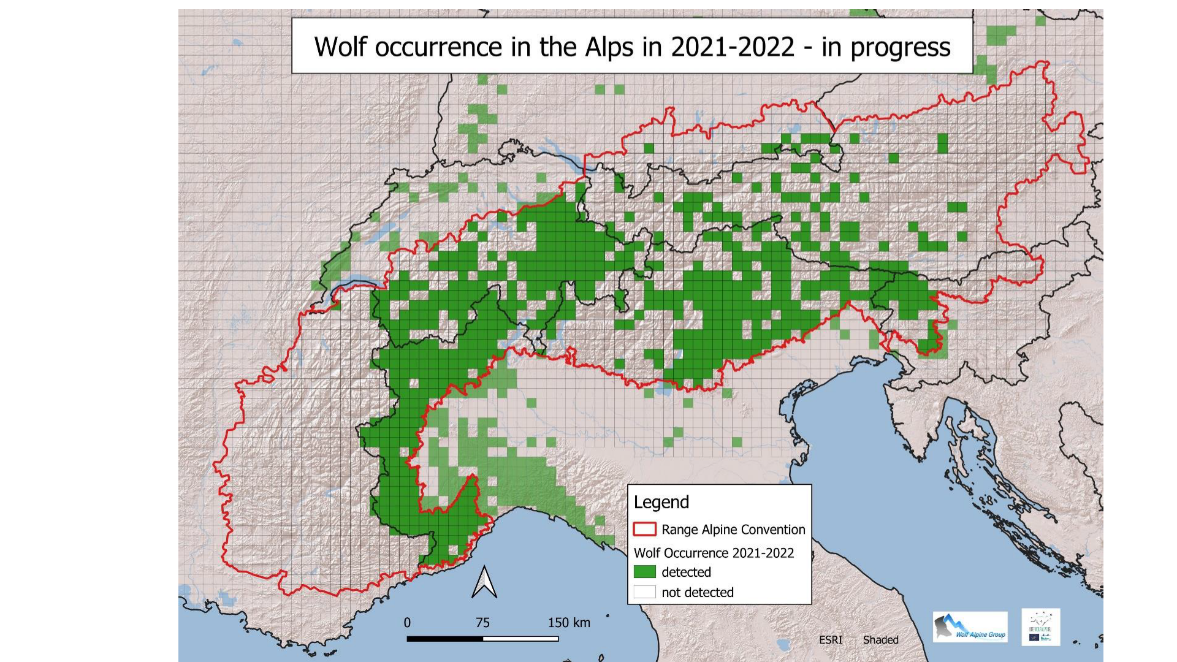After the owner described the discovery, the pasture and the fence were searched for traces of the possible perpetrator. A paw print was found and measured at one point in the soft ground. The sheep's injuries could only have been caused by an animal with strong teeth. The holes in the sheep's fur were 6 cm apart, all of these indications point to a wolf. Confirmation from the DNA samples taken by the official veterinarian Wilfried Laubichler is still pending.
The injured lamb was slaughtered at the HBLFA Raumberg-Gumpenstein and the remaining lamb, the herd only consisted of the two ewes with their lambs, was passed on to another sheep farmer. Even if the economic damage is small, for the owner the event means the end of her sheep farming activities.
No further work by the emergency team was necessary on site. All livestock farms in the area have been asked to protect their herds in the near future. It is uncertain whether the wolf will move on or stay with us for a while. All those affected, farmers, hunters and those seeking relaxation are called upon to report any information to the official veterinarians or the district administrative authority.
Where do the wolves come from?

Evidence of wolves in the Alpine region 2021/22 (Source: LIFE Wolfsalps EU project)
With legal protection, the wolf population has developed well in Europe with an annual increase of around 30% (data from Germany). The distribution maps of our neighboring countries show that the wolf packs are getting closer and closer to the borders with Austria. With our currently seven packs in Austria, which also produce offspring, there are more every year. The one-year-old or two-year-old young animals leave their pack to look for a partner. They often use human infrastructure and move next to roads or railway lines. The wolf, which was equipped with a radio in Switzerland, showed how far a wolf can travel, covering almost 2,000 km, from Graubünden to near Budapest.
Where can the wolf live?
The wolf is very adaptable when it comes to its habitat and its prey. It finds habitat almost everywhere, but it only needs an undisturbed place to raise its young. In Austria, both unprotected farm animals and hoofed game are the preferred prey. Both are available in sufficient quantities. As an efficient hunter, the wolf prefers animals that are easier to kill at the time of hunting. Sheep are particularly often affected because they are of a suitable size and do not show any defensive or escape behavior. Regardless of the fundamental questions surrounding wolf management in Austria, people who keep animals currently have no choice but to protect their herd through proactive measures.
Protection of farm animals in residential areas through electric fences
Electric fences with a minimum voltage of 3500 volts are considered wolf-repellent fences. There must be no opportunity for the wolf to slip under or through the fence. Therefore, an electrified network or 4 strands/wires with a ground clearance of 20, 40, 60, 90 cm should be used. The challenge is the ground clearance of 20 cm to prevent the fence from hiding or being undermined. In addition, the vegetation must be taken into account. If it becomes too strong, it will dissipate a lot of electricity and the voltage will fall below 3500 volts. Therefore, stronger electric fence devices should be used that provide an output power of at least 4 joules. In practice, we often see the mistake that powerful devices are not sufficiently grounded. A rule of thumb applies: 1 meter rod of grounding per joule of power. For a 4 Joule device, this means installing 4 ground rods made of a stainless material at a distance of 3 meters from each other. How a herd protection fence should be built and what sources of error there are can be found in the brochure Technical Herd Protection from the Austrian Center Bär, Wolf, Luchs. Link: OeZ_Herdenschutzbroschuere.pdf (baer-wolf-luchs.at)
Herd protection fences should be erected where it is proportionate. This can e.g. B. areas near the farm. In addition to the financial and work-related burden, fencing entire mountain pastures doesn't make sense. Guided pasture management can at least solve this problem on suitable alpine pastures, albeit with a lot of effort
Author: Huber Reinhard , Dept. Sheep and Goats HBLFA Raumberg-Gumpenstein













